Gardens: how a patch of wild wood in Cornwall got a truly magical makeover
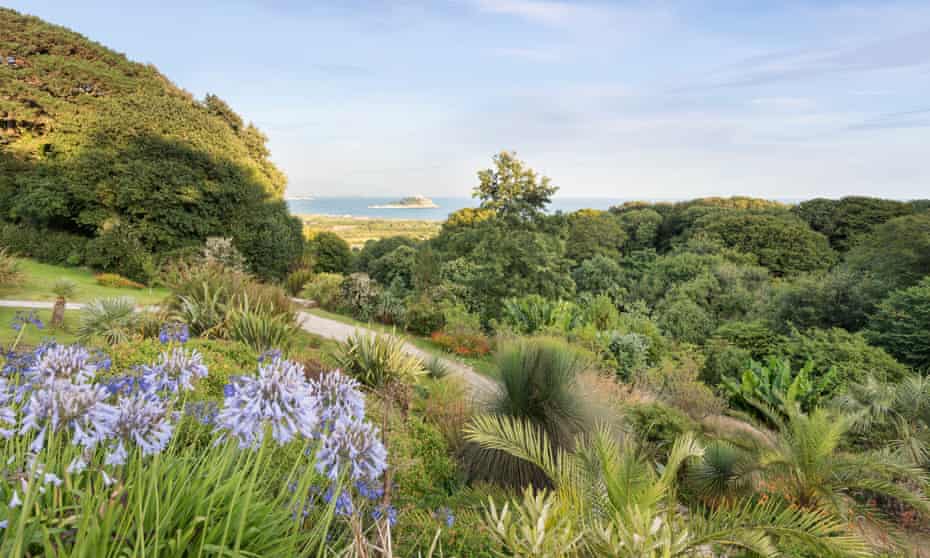
With a climate quite unlike the rest of Britain, the untamed hillside has been transformed into a garden that makes the most of its surroundings
From hedgerows full of campion and bluebells, to lush, fat aeoniums and swaying palm trees, Cornwall’s plants and flowers revel in a mild maritime climate that keeps frosts at bay and makes it one of the sunniest parts of the UK.
The county is known for its formal gardens that surround grand old houses and show off the classic Cornish combination of rhododendrons, magnolias and camellias mixed with sub-tropical planting and walled kitchen gardens.
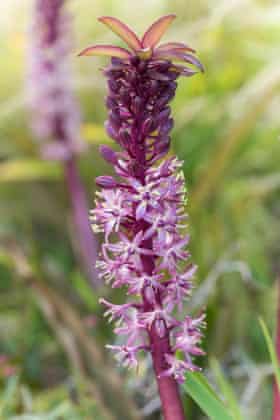
Tremenheere Sculpture Gardens, with its sweeping views of Mount’s bay and St Michael’s Mount, is a very different proposition. Situated just over a mile east of Penzance in a sheltered south-facing valley and surrounded by mature woodland, it isn’t a classic Cornish garden, says its owner Neil Armstrong, a GP, now in his 60s. “There is a complete lack of formality here. I didn’t have a long drive to accommodate and I wasn’t bound by any history.”
Tremenheere was originally an untamed hillside. In 1997, the 10-acre parcel of woodland came up for sale, and Armstrong, who lives a few miles away, decided to buy it. “It had a magical atmosphere,” he says. “Road noise disappears as you enter. There is just birdsong and the stream and the view. I had been a GP for 10 years and wanted to find a project I could throw myself into. I wanted to create something.”
The woodland had suffered a century of neglect and it took him almost five years to clear the fallen trees, brambles and nettles, to drag mounds of wild rhododendron out of swampy ground and up the hillside to be burned, and to collect and dispose of hundreds of empty fertiliser bags that were strewn across the site. He did all this during weekends and evenings after work, almost entirely by himself.

Although neglected, the woodland was rich in wildlife, with a busy backdrop of damselflies, butterflies, jays, woodpeckers, stoats and otters. Daffodils ( a relic of the 19th-century Cornish flower-farming industry) sparkled in the spring sunshine, and carpets of bluebells that had been established for decades flowered each spring. “My job was not to muck it up,” Armstrong says.
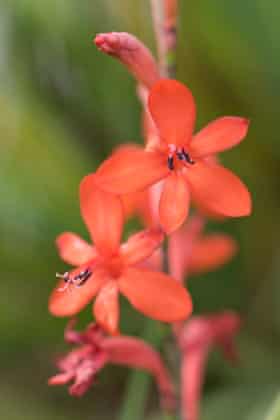
Stone walls suggested some existing structure, and Armstrong hired someone to sculpt pathways and hillsides with a digger. On this blank canvas, he created a shelter belt of trees to protect the garden from salt-laden coastal winds, then began planting.
Armstrong has travelled widely through many countries, including Mexico, Taiwan and South Africa, and drew on memories of the wild, subtropical landscapes he saw to inspire him. He planted tree ferns such as Dicksonia antarctica and D. fibrosa, as well as Cyathea medullaris and C. australis. Short, trunking ferns such as Lophosoriaquadripinnata and Todea barbara provided a middle-storey structure above a host of ground ferns, including Blechnum and Dryopteris. Himalayan giant-leaved rhododendron and magnolias have now grown up to create the tree canopy.
As a result of erosion, the soil is 7.5cm thick on the south-facing slopes, but one metre thick at the bottom of the garden, which is why Armstrong went for a drought-tolerant scheme. He creates impact with mass planting and repetition: “I find the effect of many different plants together too busy on the eye.” The slopes are dominated by plants from Mexico, South Africa and New Zealand, and by a large collection of the highly structural Xanthorrhoea glauca, the Australian grass tree. These are underplanted with other plants with strong silhouettes (cycads, palm trees and yuccas) and with pops of colour from agapanthus, crocosmia, watsonia and day lilies. Wafting grasses such as stipa, molinia and chionochloa tie the scheme together and visually, provide constant movement thanks to the sea breeze.
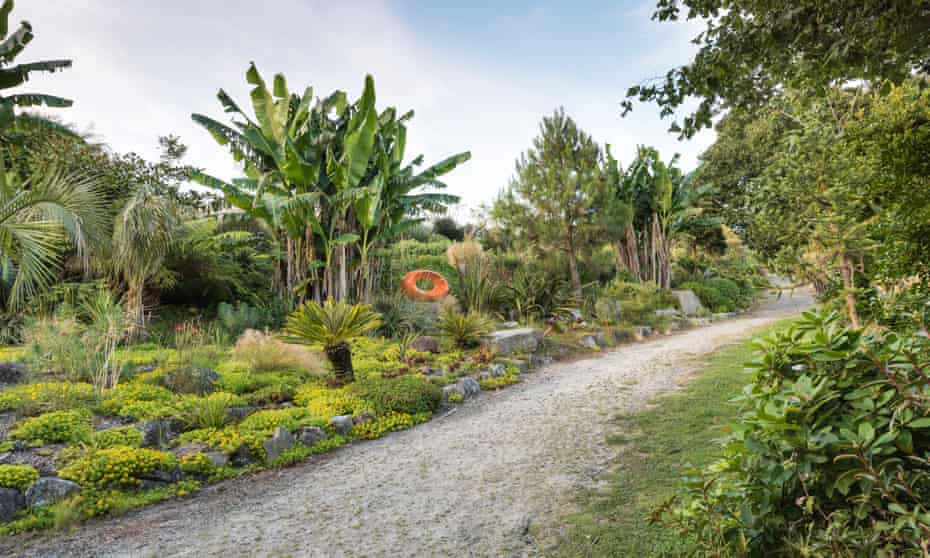
The garden is home to contemporary sculpture by artists including David Nash, James Turrell and Richard Long; the planting also has a sculptural feel.
For structure, Armstrong has used agave and dasylirion, underplanted with flowing grasses such as Stipa tenuissima mixed with colourful flowering perennials. Agave montana and A. ovatifolia are favourites; Nolina hibernica and N. nelsonii also do well. The trick to growing these is to improve the drainage, Armstrong says, something he did even on these well-drained slopes by adding tonnes of quarry waste to the soil. “It is winter wet rather than cold that kills these plants, so ensure perfect drainage and you can grow them. If they are in the right conditions and have no water pooling about their roots, a garden such as this is no trouble once it’s established. The dry, sunny banks thrive on complete neglect.”
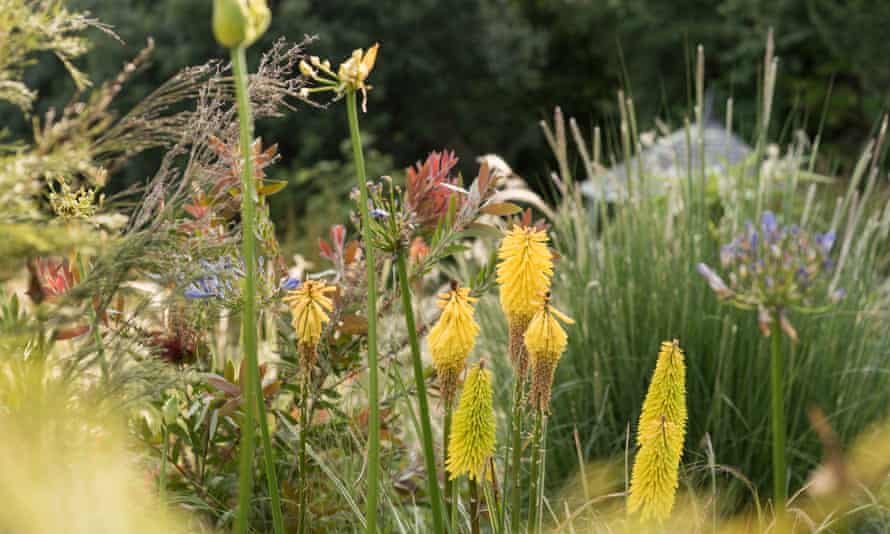
So special are the conditions here that some of the plants Armstrong grows, such as cyathea, survive in west Cornwall and on the Scilly island of Tresco, but nowhere else in the UK – not even a mile to the east. The extreme south-west tip of Cornwall just dips its toe into the warmer Gulf Stream and benefits from the moderating effect of the sea all around.
Tremenheere is constantly evolving: the planting and artwork change with the seasons, and Armstrong creates new vistas and schemes. From its humble beginnings, Tremenheere now has a restaurant, shop, nursery and art gallery with a rolling programme of contemporary exhibitions. Outdoor theatre, music and circus events take place on a level, grassed area by the restaurant.
Armstrong has some help now – a gardener who comes two days a week, and three volunteers. He is looking ahead to when he retires in a few years, when he plans to join them more often.
“Making this garden has been a huge privilege,” he says. “It has been my place to retreat from work – and enormously restorative. I’m looking forward to being able to be more intensively involved.” Armstrong plans to work every day in the gardens but also to continue travelling, when restrictions allow: “there is always more to learn.”
Five Tremenheere plants to try at home
Stipa tenuissima Lovely waving grass for underplanting. Likes well-drained soil and will self-seed.
Crocosmia ‘Lucifer’ Vigorous and happy in a range of soils. Provides pops of vibrant red all summer.
Dicksonia antarctica The tree fern: beautiful but not entirely hardy. Wrap the tops with hessian over winter to keep out frost.
Agapanthus ‘Brilliant Blue’ A hardy, compact variety of the Nile lilies seen all over Cornwall. Grow in borders or pots.
Agave americana One of the hardier agaves, this will survive in many parts of the UK in very well-drained soil.